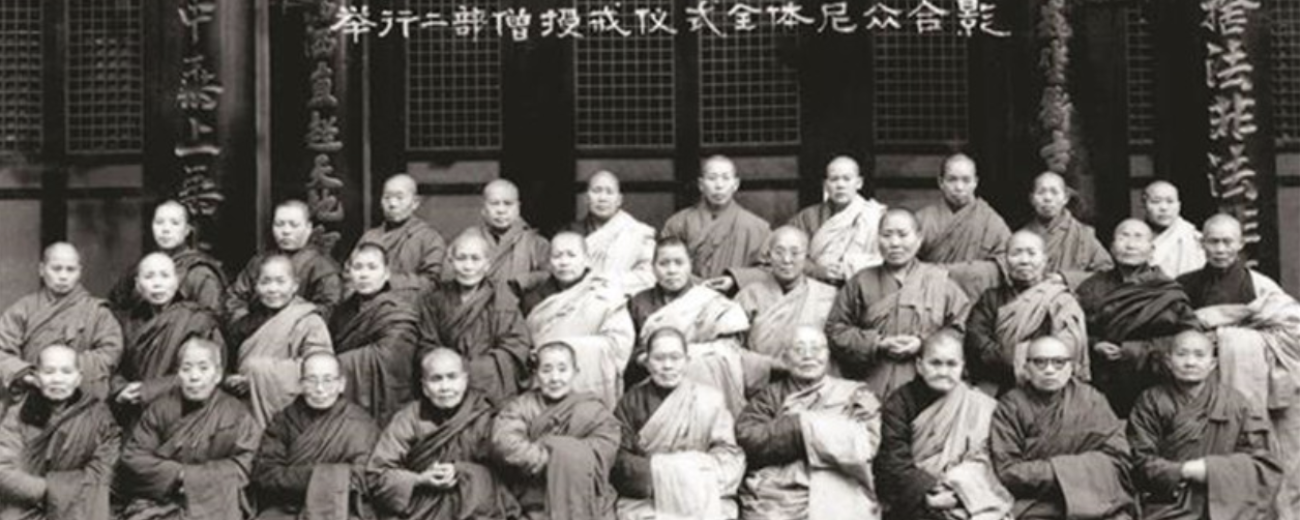
Dual ordination in post-Mao China: Rediscovering tradition and navigating modernity

Key information
- Date
- Time
-
5:30 pm to 7:00 pm
- Venue
- Main Building
- Room
- Khalili Lecture Theatre (KLT)
- Event type
- Lecture
About this event
Robert H.N. Ho Family Foundation Lecture Series in Chinese Buddhism at the SOAS Centre of Buddhist Studies.
The bhikṣuṇī ordination process known as “dual ordination” (erbuseng jie 二部僧戒), outlined within the Vinaya texts, remained largely disregarded in China for over a millennium. However, it gained significant attention in the 1930s and 1940s, including an exceptional attempt to revive it in 1947, and was reintroduced in Taiwan and Mainland China in the late 1970s and early 1980s, respectively.
This presentation relies on the author’s prior research (Bianchi 2019 and 2022) and recently disclosed documents, such as personal letters, official archives, and an annotated version of the procedures, shedding new light on the organization of the first Dual Ordination in Chengdu in 1982. We'll delve into how the two bhikṣuṇīs Longlian 隆蓮 (1909–2006) and Tongyuan 通願 (1913-1991) engaged in discussions, consulted with Vinaya masters, and studied canonical texts.
They eventually edited the “Dual Ordination Procedure” (Erbuseng shoujie yishi 二部僧受戒儀式), aligning the Qing dynasty ordination manual with modern needs and ideas, and adapting it to contemporary settings. The current status of Dual Ordinations in China largely stems from their collaborations and mutual agreements.
About the speaker
Ester Bianchi holds a Ph.D. in ‘Indian and East-Asian Civilization’ from the University of Venice (co-tutorial Ph.D. received from the Ecole Pratique des Hautes Etudes, Section des Sciences Religieuses of Paris). She is currently Associate Professor of Chinese Religions and Philosophy and of Society and Culture of China at the Philosophy Department of the University of Perugia (Italy), is external associated researcher of the Groupe Sociétés, Religions, Laïcités CNRS-EPHE (2012-), and is currently a contributor of the Research project “Chinese Buddhism in Globalization: States, Communities, and Practices of Religion” (directed by Yoshiko Ashiwa and David Wank, 2020-).
Her research is centered on Sino-Tibetan Buddhism, Chinese Buddhist monasticism, the revival of Buddhist monastic discipline and, more recently, the rediscovery of early meditation techniques and the spread of Theravāda Buddhist Model in modern Chinese Buddhism.
Ester Bianchi is the author of The Iron Statue Monastery, Tiexiangsi: A Buddhist Nunnery of Tibetan Tradition in Contemporary China (Olschki 2001) and of the first Italian translation of the Gaoseng Faxian zhuan (Morlacchi 2013). Her co-edited volumes include Sino-Tibetan Buddhism Across the Ages, co-edited with Shen W. (Brill 2021), and “Take the Vinaya as Your Master”: Monastic Discipline and Practices in Modern Chinese Buddhism, co-edited with D. Campo (Brill 2023).
Her main articles include: “Reading Equality into Asymmetry: Dual Ordination in the Eyes of Modern Chinese Bhikṣuṇīs” (Religions, 2022, 13/10, 919); “Revisiting Impurity in Republican China: An Evaluation of the Modern Rediscovery of Bujing guan 不淨觀” (Religion 12, 903, 2021); “Understanding jielü 戒律: The Resurgence and Reconfiguration of Vinaya-Related Concepts in Modern China” (in G. Scott, S. Travagnin eds., Critical Concepts and Methods for the Study of Chinese Religions II, De Gruyter 2020, 55-80); “‘Transmitting the Precepts in Conformity with the Dharma’: Restoration, Adaptation, and Standardization of Ordination Procedures” (in Zhe Ji, G. Fisher, A. Laliberté eds., Buddhism after Mao, University of Hawaii Press 2019, 152-170); and “Yi jie wei shi 以戒為師: Theory and Practice of Monastic Discipline in Modern and Contemporary Chinese Buddhism” (Studies in Chinese Religions, 3/2, 2017, 111-141).
Attending the event
This event is free and open to all, followed by a wine reception.
- Organiser: SOAS Centre of Buddhist Studies

